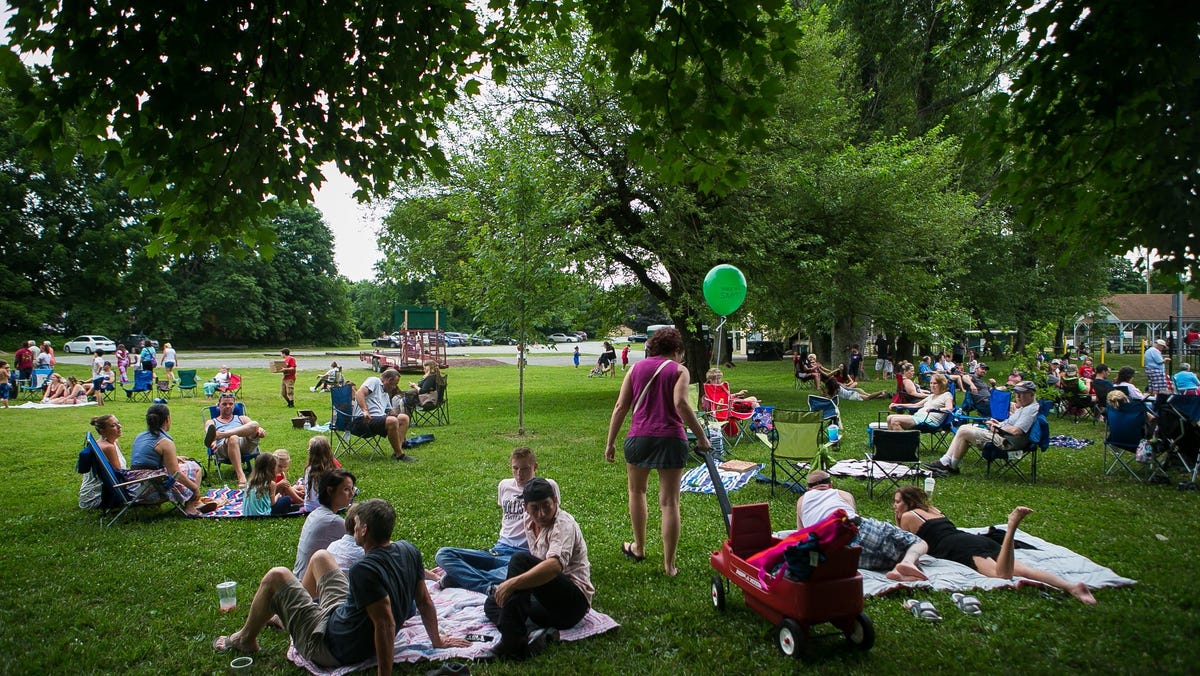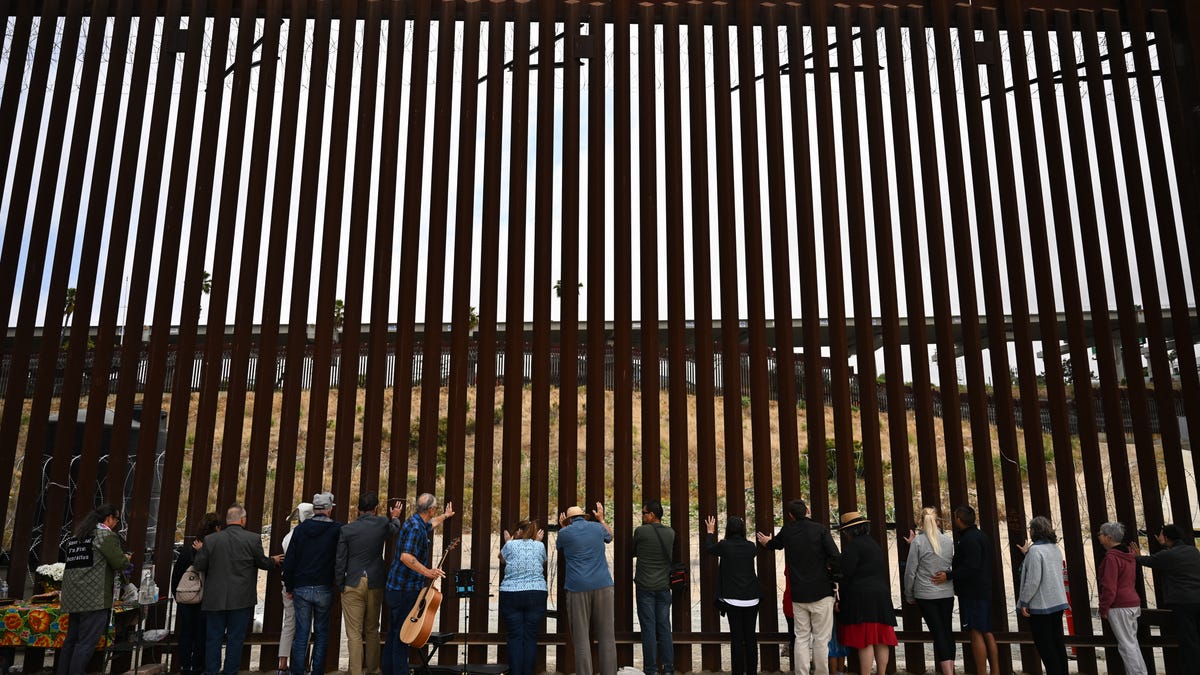On a special episode (first released on July 2, 2025) of The Excerpt podcast: To what extent is divisiveness baked into our infrastructure, politic, and psyche? Anand Pandian, Professor of Anthropology at Johns Hopkins University, joins USA TODAY’s The Excerpt to discuss his new book “Something Between Us.” In it, he explores the walls that divide us as a nation.
Hit play on the player below to hear the podcast and follow along with the transcript beneath it. This transcript was automatically generated, and then edited for clarity in its current form. There may be some differences between the audio and the text.
Podcasts: True crime, in-depth interviews and more USA TODAY podcasts right here
Dana Taylor:
Hello, I’m Dana Taylor, and this is a special episode of The Excerpt.
Walls, we all navigate them, whether they be the walls throughout our homes, neighborhoods, the places we choose to frequent, or the internal walls that allow us to maintain our distance from others. What do the walls we erect represent when we look at how they shape our society as a whole? Anand Pandian, professor of anthropology at Johns Hopkins University traveled across America in search of answers. What is keeping us apart? That’s the subject of his new book, Something Between Us, on bookshelves now. Anand joins us now to discuss his experiences seeking out people whose views he disagrees with and whether our disconnection is a choice or a consequence of living within a world of physical, political, and psychological walls. Thanks for joining me, Anand.
Anand Pandian:
Thank you so much for having me. It’s really a pleasure.
Dana Taylor:
I want to start with the idea of cultural belonging in America, deciding who’s in and who’s out. Has this idea become increasingly fluid or has it always been this way?
Anand Pandian:
Well, this is of course a nation of immigrants and we’ve been lucky to share this country with people from so many places of the world, and at the same time, we have most certainly seen that cultural difference, racial and social difference have become much more fraught topics. In recent years there has been a lot of consternation around the question of who really belongs in this country and who may not quite have a place. And it’s questions like that and concerns like that, that led me to pursue the research for this book.
Dana Taylor:
What drives Americans’ suspicions of migrants, especially when we look at policies like Title 42, which allows curbs on migration in the interest to protecting public health. What’s the origin of those fears?
Anand Pandian:
That’s a really important question to think about, and in fact, it was the border wall in particular and the slogan Build the Wall. That was such a powerful image and idea in the run-up to the 2016 presidential election that motivated me to pursue the research for this book. I was interested in why it was that that idea of a wall around the entire country appealed to so many people. And why it was that an image like that seemed to make it okay for people to stop thinking about the suffering of those beyond those walls, the needs of those beyond that barrier, why it was that we could turn a blind eye to the kinds of concerns that migrants and refugees and others come to this country with, often in circumstances of profound need and even desperation.
What I’ve found, however, in pursuing this research is that it isn’t enough to simply think about the boundaries of the country, the division between our nation and others. That many Americans all around the country have come to live with many different forms of everyday walls, everyday divides, everyday barriers and boundaries that I argue in the book make it more difficult for people to relate to others outside the circumstances of isolation, separation, and indeed, segregation that they have fallen into.
Dana Taylor:
You wrote that living in gated or walled communities has become a symbol of security and not just for the wealthy. Are these choices about exclusion? Or are there other societal issues at play here?
Anand Pandian:
It is certainly true that gated communities are a serious phenomenon that we have to grapple with in the contemporary United States. One in five Americans who lives in a residential community at this point, lives in a community that is gated. And that has all kinds of implications for who people see on a day-to-day basis, and the simple fact that those who share those communities with people who choose to live in such spaces are often very much like them, who share the same background very often. And circumstances like that make it that much more difficult to interact with people who are different than those that one is surrounded by.
At the same time, what I try to argue in the book is that there are all kinds of other every day walls divides barriers, forms of separation and isolation that Americans have also come to take for granted that they live with on a daily basis. You see this in the way that people occupy the space of their homes, whether they’re in gated communities or not, the fact that people are spending much less time on their front porches than they used to, that we’re seeing people walking less on sidewalks in the company of strangers and neighbors. You see it in the kinds of vehicles that people drive, which are ever larger in the United States, SUVs and trucks that make it much more difficult to interact with people outside the shells of those cocoons, often pedestrians and cyclists whose lives can be put at greater danger because of the sheer mass of those vehicles. You see it in cultures of the body in the United States that take seriously the idea that our bodies need to be secured from others as if they were also fortresses to armor and defend.
And lastly, I argue in the book you see it in what I call walls of the mind, the ways in which our social media and our information ecosystems segregate us once again by putting us in the company of ideas we’re already familiar with, exposing us to points of view that we already tend to agree with, and making it that much harder to access the ideas, experiences, and perspectives of those whose positions in the world and those whose experiences in the world are so much different than our own.
Dana Taylor:
Anand, you raised a comparison between the “certified clean idle crowd and the certified dirty idle crowd”. First, explain what those mean and second, what’s the cultural significance of this divide?
Anand Pandian:
There’s an entire section of the book on roadway culture in the United States in which I’m trying to make sense of the rise of much more massive vehicles, as I mentioned before, SUVs and trucks. I’m trying to think about what it’s like for those who continue to choose to navigate the world in a more exposed and vulnerable manner as pedestrians and cyclists, what it feels like to be outside the walls of those hulking vehicles. But I’m also interested in those who have in a way leaned into the polluting nature of some of these automobiles, who have embraced the fact that there are higher emissions and often much more polluting emissions at stake in larger vehicles, but especially in diesel vehicles.
And that distinction that you draw comes from a chapter in the book on the phenomenon of coal rolling, which has to do with diesel trucks that are deliberately retrofitted to expel excessive amounts of black smoke, which is a kind of subculture here in the United States, a way of celebrating the soot and exhaust that comes from these vehicles, of thumbing one’s nose at those who would say, “These are things that are polluting and that we should therefore try to control or restrict.”
There are cultures in this country that have formed around a backlash to those forms of environmental concern that would seek to encourage all of us to organize what we do as individuals in relation to these larger concerns around the environment. And I try to document how it is that people get pulled in to practices like coal rolling despite the incredibly violent effects it can have on those who are submitted to those kinds of tactics.
Dana Taylor:
What do you think it would take to turn public spaces of movement such as our roadways, walkways and transit systems into spaces that foster a way to experience a feeling of community?
Anand Pandian:
It’s a really important question. It’s a question that planners and designers and people who are interested in more habitable forms of urban space have really been wrestling with, and we see all kinds of interesting experiments of this kind that would seek to make our shared space more accessible and friendly and open to those who would like to occupy that space in different ways. You can think, for example, about the complete streets movements that are setting aside roadway space for pedestrians and cyclists and others on streets in localities all around the country.
These kinds of possibilities also build, I argue in the book, on generations of social movements that have tried to organize for the protection of common space, for the protection of shared space, for the protection of places in which we can come together for more collective sense of who we are as Americans and what we owe each other and what we could be doing with the welfare of each other in mind. I think that there’s a great deal of power in the idea of the commons, in the idea of approaching shared public space as a commons, a space that we nurture together, that we take care of together, that we look after together, and that we can protect as a symbol of the larger encompassing collective life that we still share despite all of these individualizing, isolating tendencies that we’re grappling with these days.
Dana Taylor:
Have Americans reached a breaking point where we resist seeing others’ perspectives and don’t want to risk someone else’s problems becoming our problems, this is a sign of privilege of moral indifference, exhaustion? What are your thoughts here?
Anand Pandian:
Yeah, I met many people over the course of this research who felt that the country was at a breaking point, who felt that we were teetering on the edge of something like a civil war in the deep inability that people seemed to have developed in talking to those that they disagree with. And we see this in all kinds of ways. We see it in our public discourse. We see it in work environments. We see it at the dining table when people gather as extended families and learn that they can’t address certain topics because they’re too difficult to take up. This is a really serious matter that we have to find our way around. And my feeling is that the only way to do that is to learn to have those more difficult conversations, learn to have more difficult exchanges, learn to see things from the vantage point of others whose position in the world may be very different than yours.
Ultimately, I don’t see these problems as moral failings on the part of individuals. I don’t think we should blame people for how they are or what they’ve become. I am inclined as a researcher to see this as a consequence of the infrastructures that we’ve come to live with in this country, these isolating circumstances that have made it so difficult for us to see those other points of view. So the more work we can do to put ourselves in the company of others that are unlike us, to open ourselves up to more contrary perspectives, to have more difficult and challenging conversations, I think ultimately the better off we’ll be in terms of coming to some sense of shared understanding and common sense once again when it comes to what a country as diverse as ours really needs in moving forward.
Dana Taylor:
Anand’s book, Something Between Us is on bookshelves now. Thanks for being on the excerpt, Anand.
Anand Pandian:
Thank you so much, Dana. It really is a privilege. The reality is that we live in a world of such deep interconnections, such deep relationships with so many people both in our neighborhoods and in the world far beyond. We need to find a way of coming back to the importance and the reality of those relationships that we share with countless others around the world. This book is just a very small effort to try to move us in that direction. I really appreciate the chance to talk with you about it. Thank you.
Dana Taylor:
Thanks to our senior producers, Shannon Rae Greene and Kaylee Monahan for their production assistance. Our executive producer is Laura Beatty. Let us know what you think of this episode by sending a note to Podcasts@USAToday.com. Thanks for listening. I’m Dana Taylor. Taylor Wilson will be back tomorrow morning with another episode of The Excerpt.








